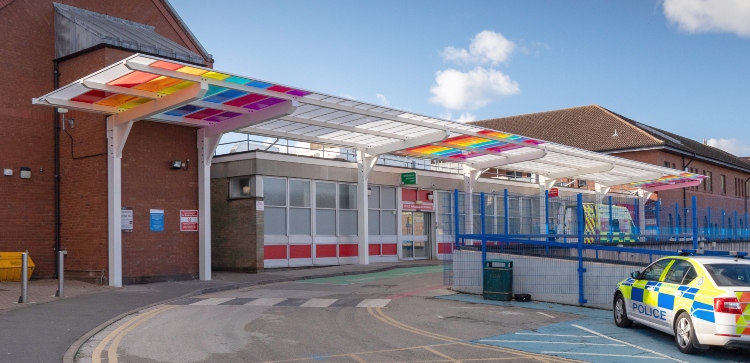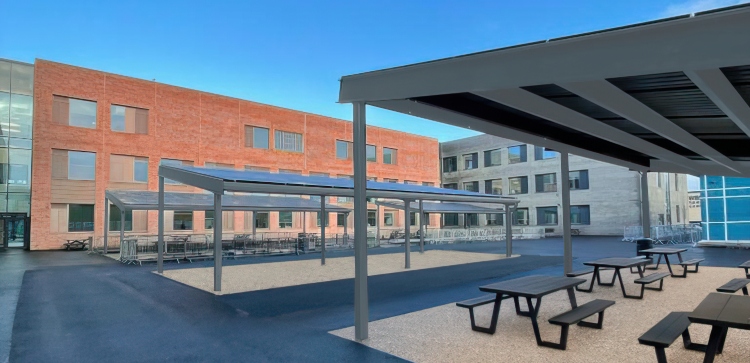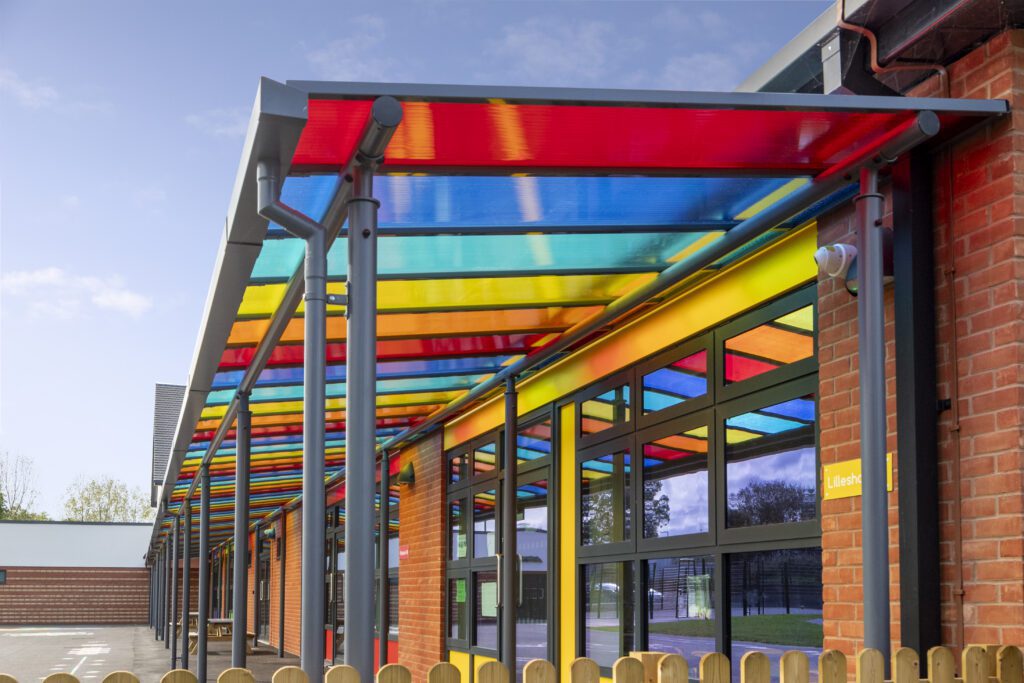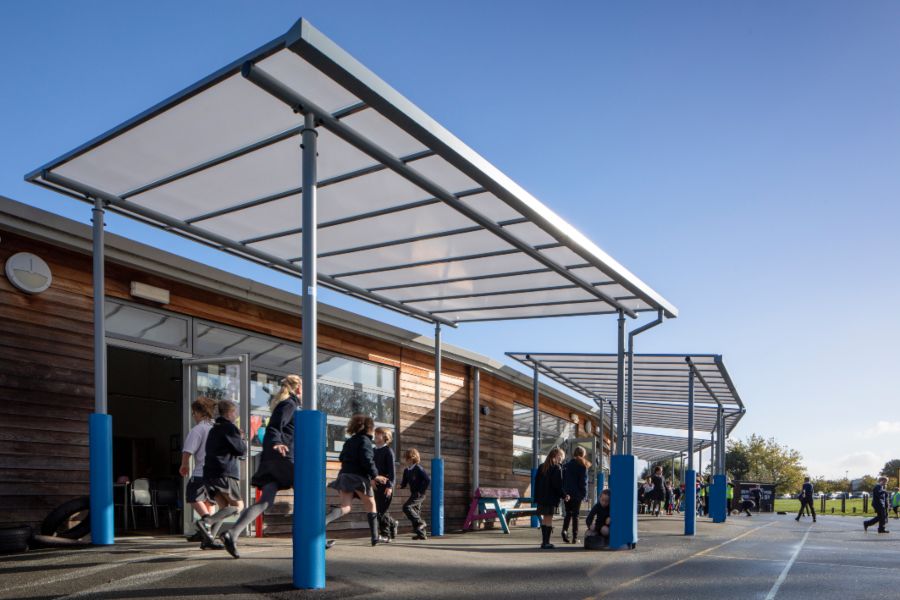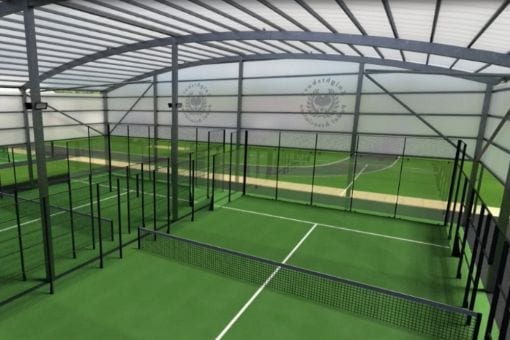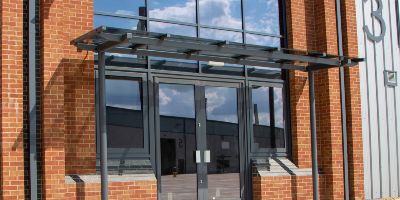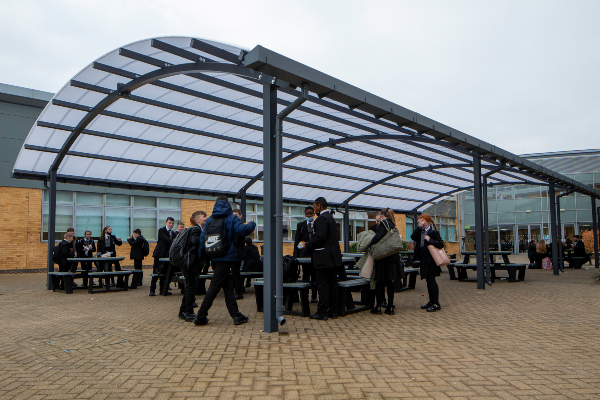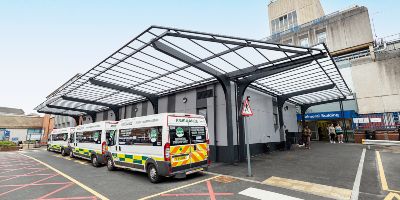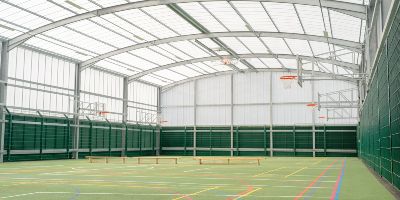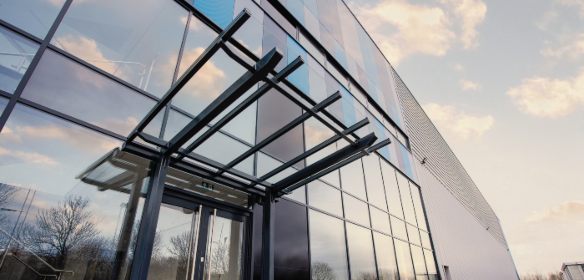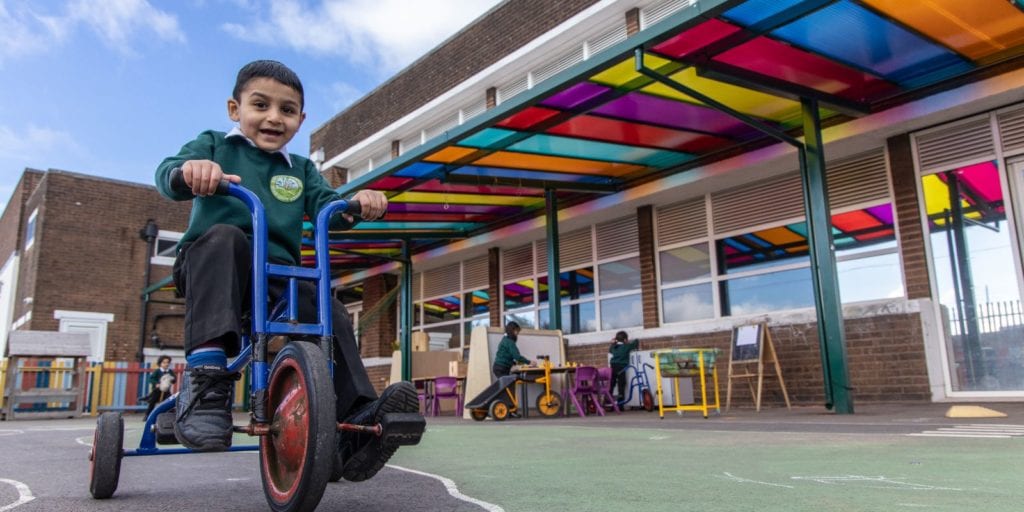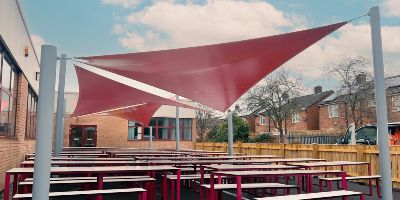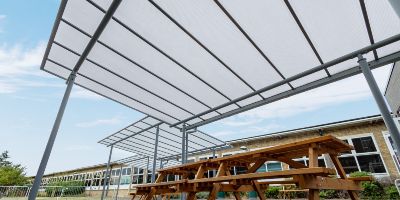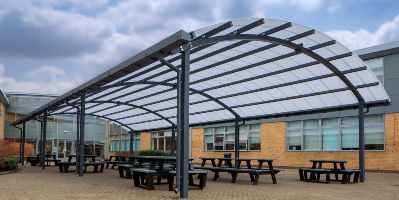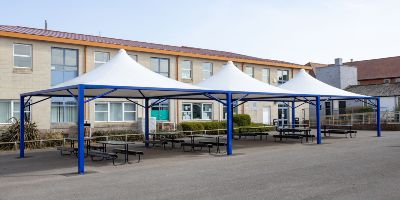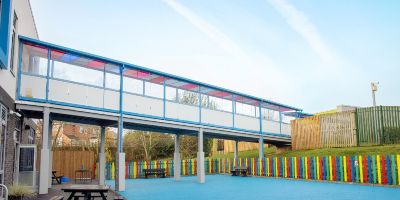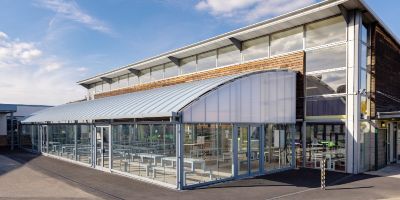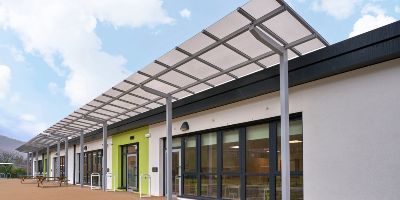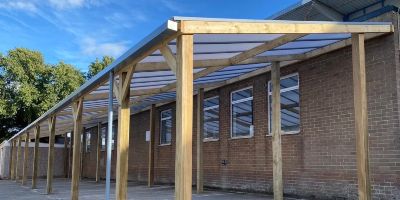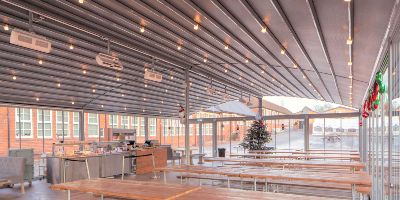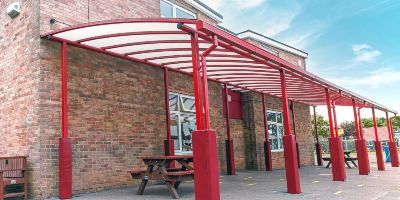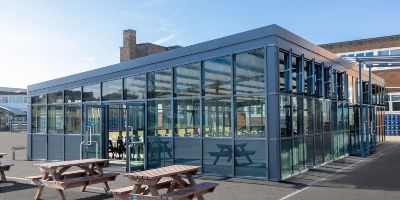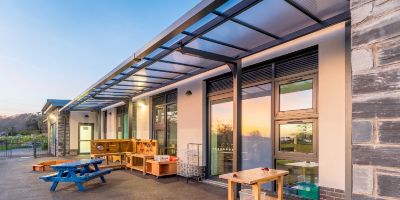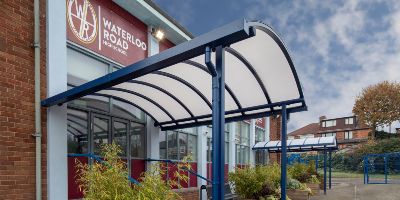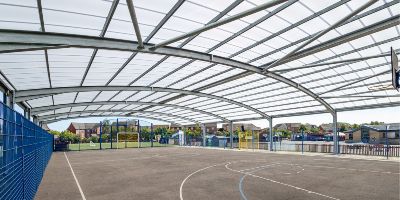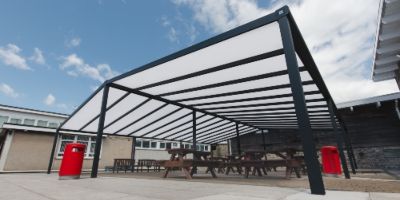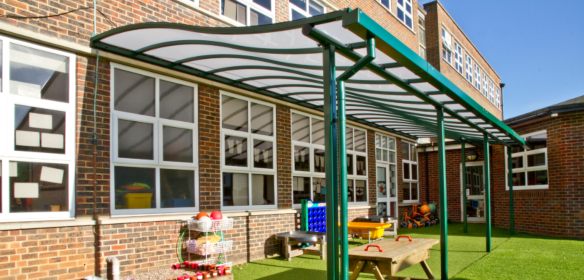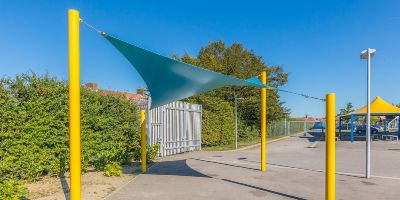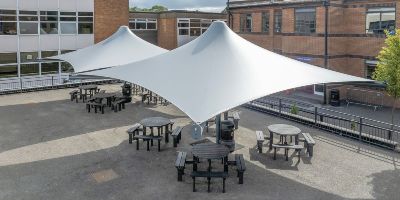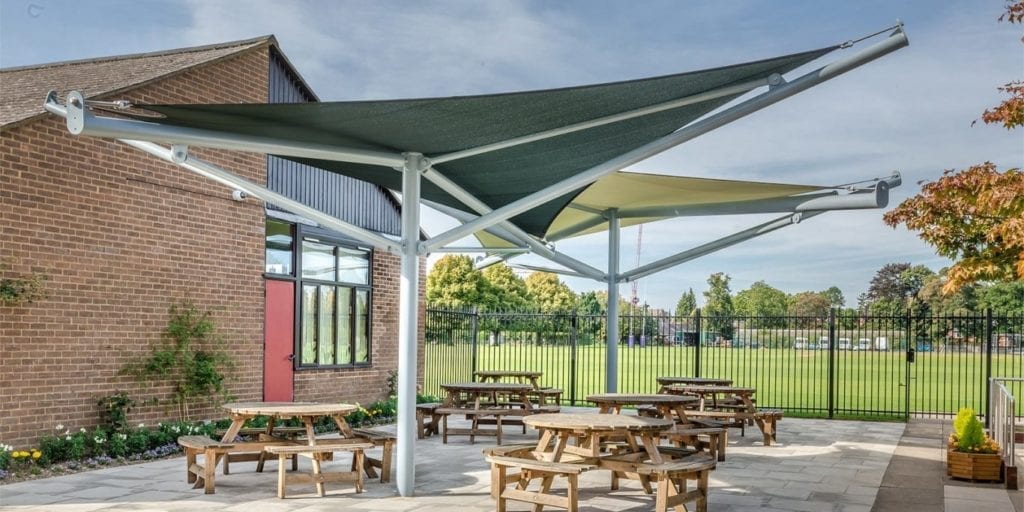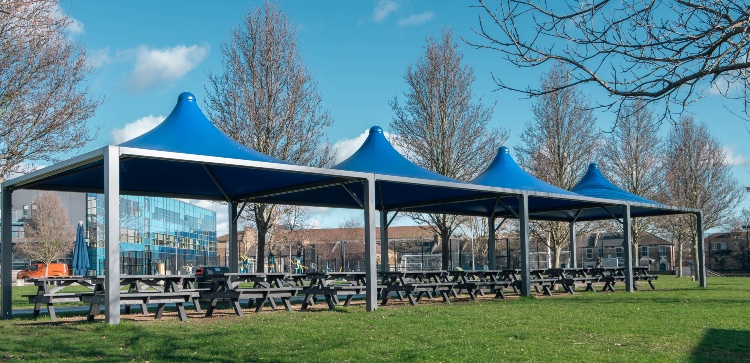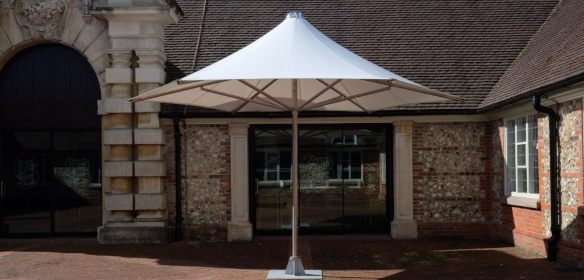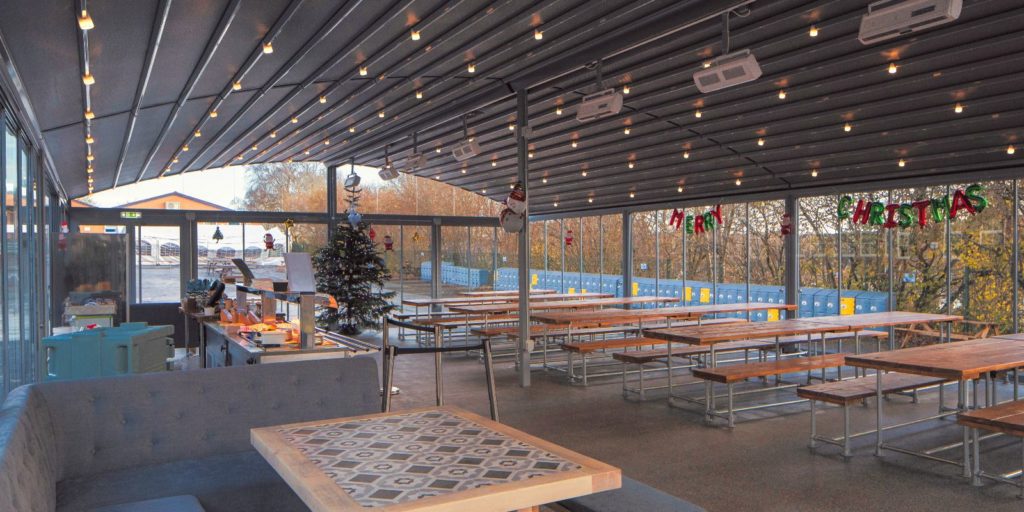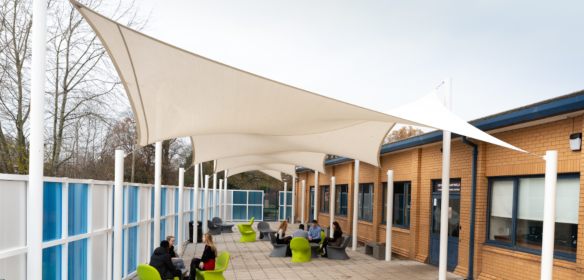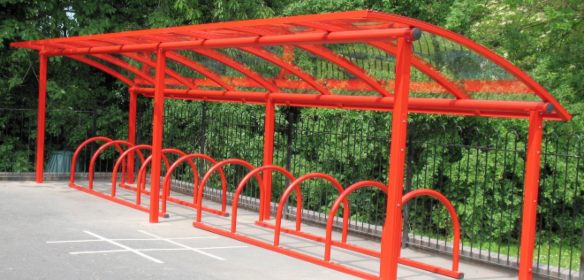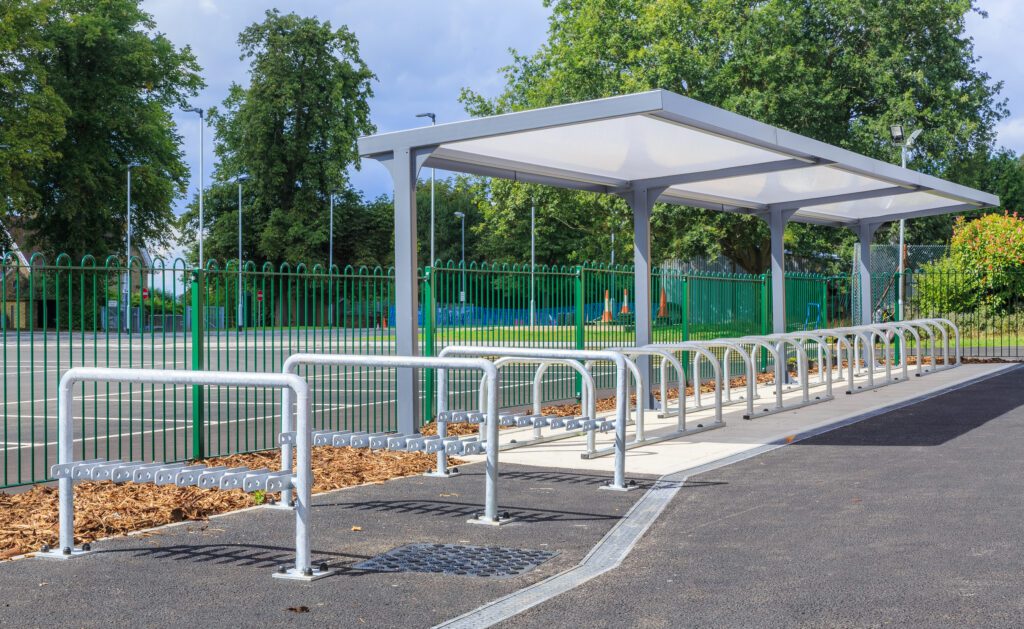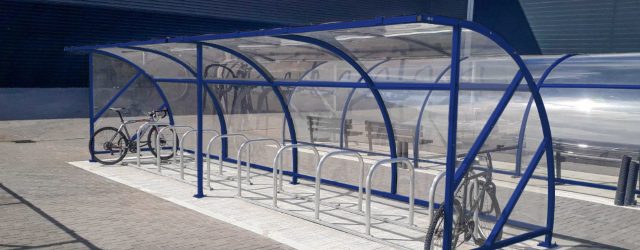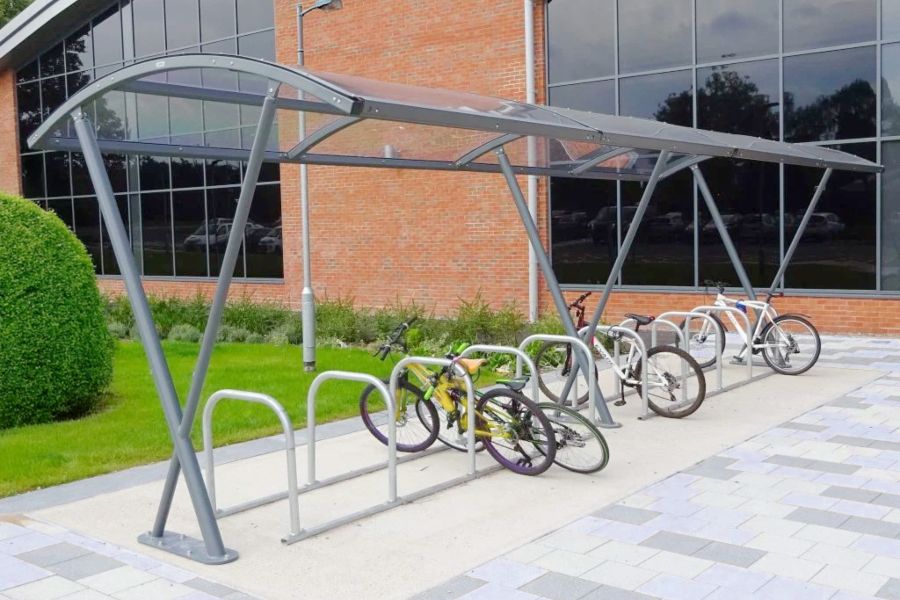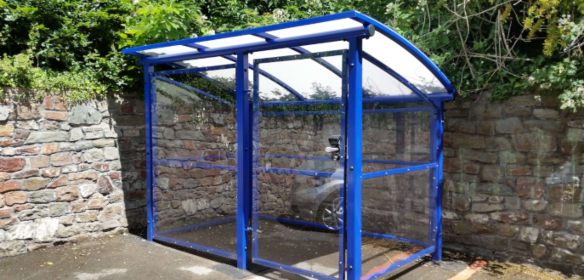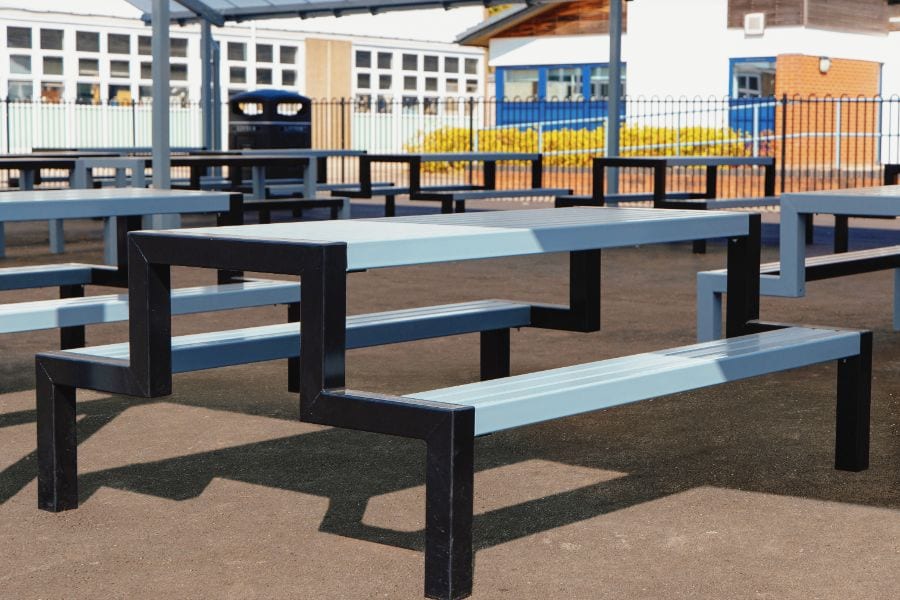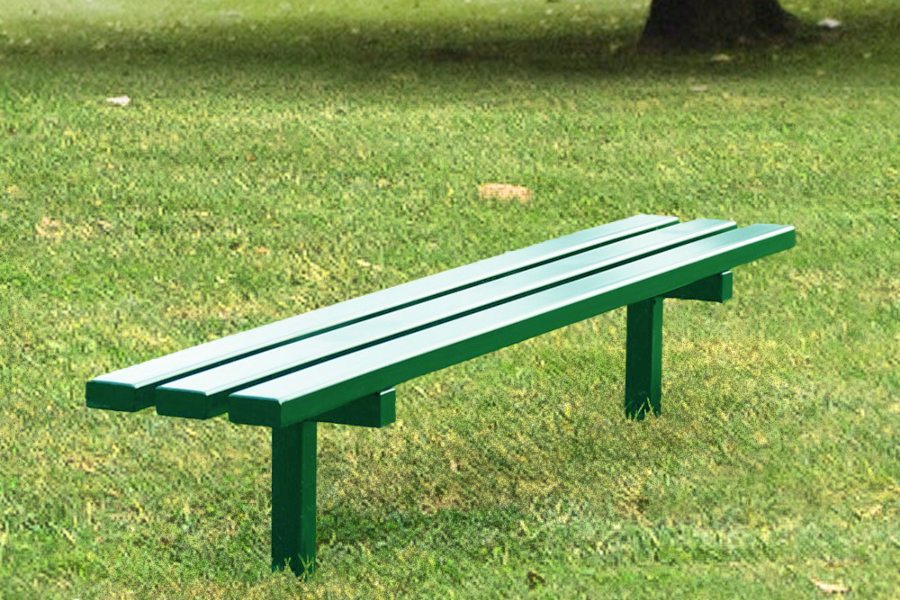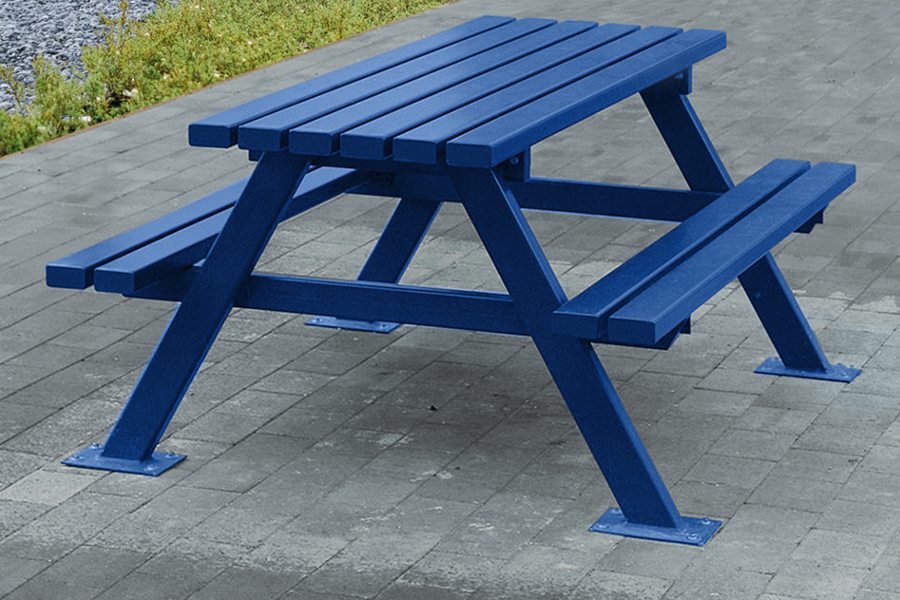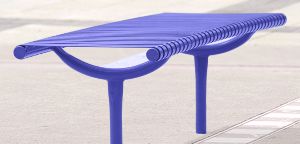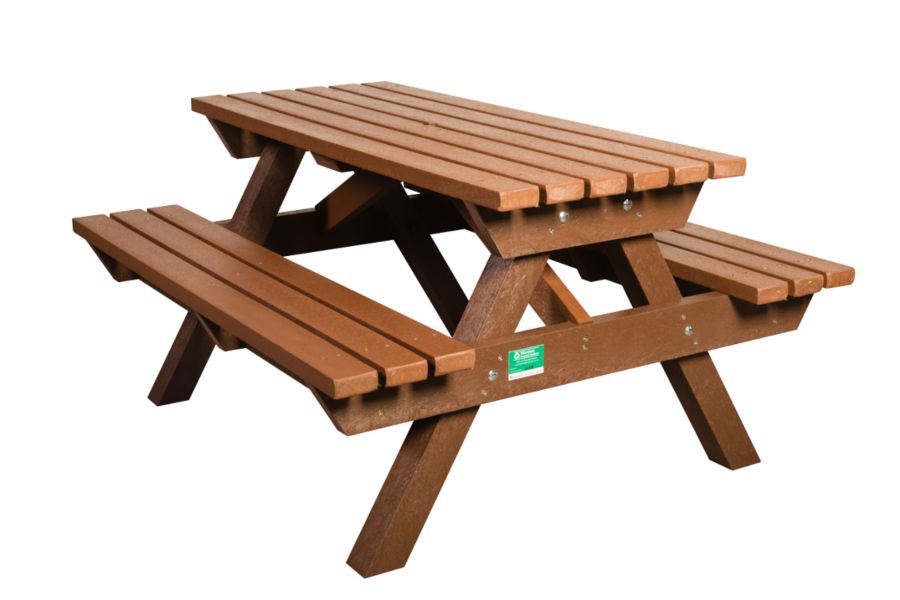As experts in designing and installing canopies, we at A&S Landscape know how these structures make healthcare sites operate better and improve patient well-being. Therefore, in this article, we’ll share with you five benefits of covered walkways for your healthcare facility. Let’s get right into it, shall we?
1. Weather Protection for All Users
The weather in the UK is very unpredictable; therefore, rain, wind, or even snow can strike at any time. A hospital covered walkway is very important because it protects people from the weather and keeps them dry and safe as they walk between buildings, departments, or wards.
Patients who are recovering from surgery or who have trouble moving around are particularly vulnerable to such unpredictable weather. For these people, it can be upsetting or even dangerous to walk across open ground in such poor weather conditions. Likewise, hospital staff who work long shifts benefit from a sheltered route because it protects them from being exposed during breaks or transitions.
Visitors also appreciate how comfortable a patient walkway shelter is, especially when they are going with loved ones to appointments or the wards. Our walkway canopies can come with UV-protective polycarbonate roofs and guttering systems, so you’ll be comfortable in both hot summer months and wet winter months.
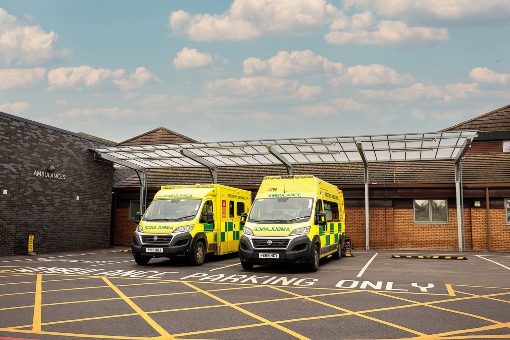
2. Increased Safety Across the Site
One of the main covered walkway benefits for hospitals is that they make the whole area safer. When the ground is wet or icy, it’s easy to slip, which is something that no hospital can afford. According to the NHS Estates Health Building Note 00-04, outdoor areas, such as covered routes, should be designed to support safe navigation and prevent accidents.
Covered walkways prevent water from building up and make it less likely that snow and ice will form on the ground. This is very important for emergency access routes, delivery paths, and outdoor transitions for patients who can’t move around easily or for staff pushing beds, trolleys, or medical carts.
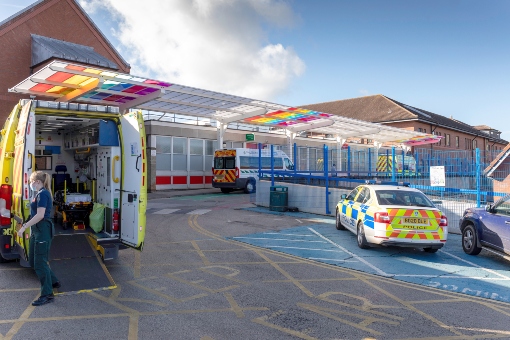
3. Enhanced Accessibility and Comfort
In healthcare settings, accessibility is not just a legal requirement; it’s also the right thing to do. The Equality Act of 2010, Part 2, Chapter 2, Sections 20 and 21, mandates that disabled users must be provided with reasonable adjustments.
A well-designed covered walkway makes a big difference in this regard. Therefore, people in wheelchairs, patients who use walking aids, and carers pushing prams or stretchers can get around more easily under covered walkways.
If it’s designed and installed correctly, a healthcare walkway canopy makes it easy to move from one department to another, no matter the weather. This is very crucial for care homes, maternity wards, and outpatient departments where people may be more likely to get sick or hurt in cold or wet weather.
To make things even more comfortable, some of our installations have side panels that block the wind. This makes the area feel more enclosed, which makes anxious patients and elderly visitors feel secure as they walk around the hospital grounds.
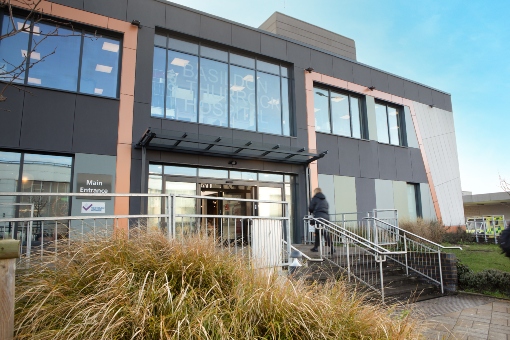
4. Long-Term Cost Savings and Efficiency
A covered walkway may come with an initial investment, but it starts saving you money over time. Pathways that are exposed to harsh weather wear down more quickly. Repair costs can go up because of issues like cracks in the pavement, water damage, moss growth, and even soil erosion.
By protecting these surfaces, we prevent walkways and landscaping from getting damaged, which means they last longer and cost less to clean and fix. Hospitals also need less cleaning indoors because fewer wet shoes mean cleaner, drier interiors.
For instance, the multiple covered walkways we installed at Denbighshire for Pentre Canol will work perfectly for any hospital. These strong yet modern designs still protect residents from the rain and wind as they move between buildings outdoors.
Covered walkways also streamline logistics. Hospital staff don’t have to worry about rain or snow damaging items or delaying operations when they move trolleys, supplies, or even sensitive equipment from one department to another.
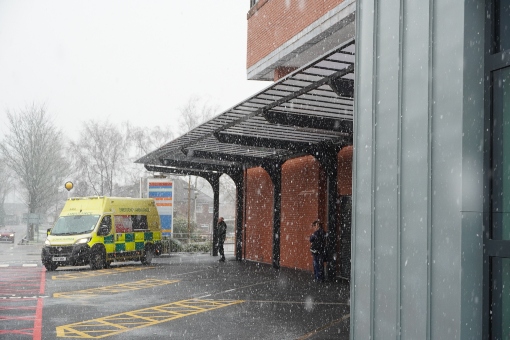
5. Improved Site Appearance and Organisation
Not only do covered walkways keep patients, staff, and visitors safe, but they can also act as guiding tools around the establishment. A hospital covered walkway that is well-planned helps define clear paths around a site, which makes it easier for first-time visitors and patients to find their way around. Signage and lighting can be integrated to further help people find their way.
Because you can choose your own colours, these structures can be made to blend with the existing buildings. This, in turn, creates a cohesive, tidy appearance. Anthracite Grey steelwork and Opal roofs are good available options you can try out, like the bespoke ambulance shelter we designed for Leicester Royal Infirmary.
Most of the time, first impressions are very important, especially in healthcare. A nice-looking, well-maintained entrance makes patients rest assured and suggests a high standard of care. Covered walkways contribute to this without the need to spend a lot of money on expensive architectural changes.
We’ve collaborated with NHS trusts to design walkways that not only work well but also look inviting. That’s why both facility managers and end users often leave us great feedback.
Conclusion
Even though covered walkways don’t perform surgery or give medicine, they help hospitals function smoothly, which is just as important. From keeping people dry in the rain to cutting down on maintenance care, they are a small change with a big effect
If you think installing a patient walkway shelter sounds like a smart move, we agree. And we just so happen to know a thing or two about doing it well. Email us at [email protected] or call us on 01743 444100 before it starts to rain again.
